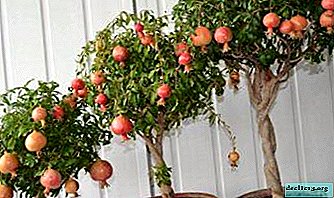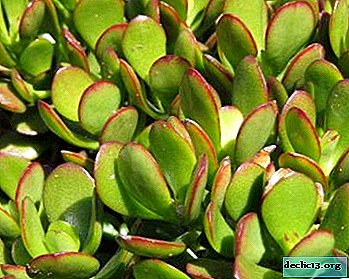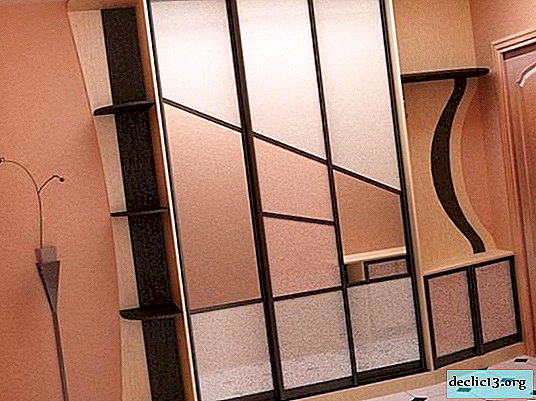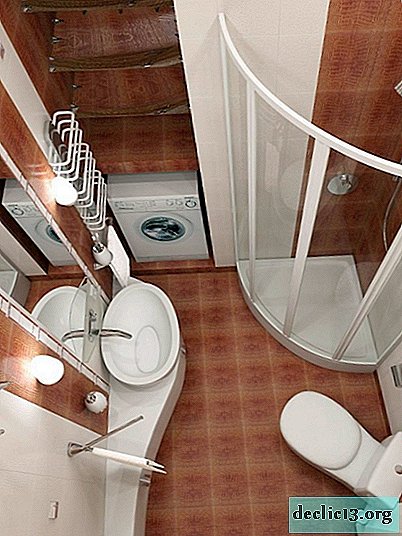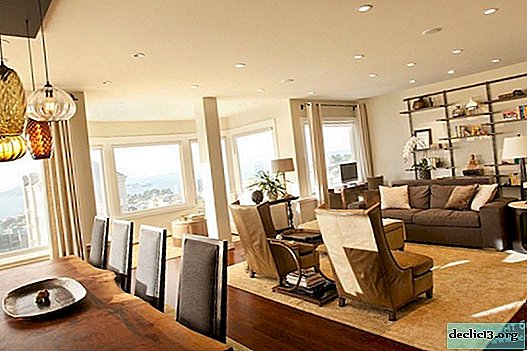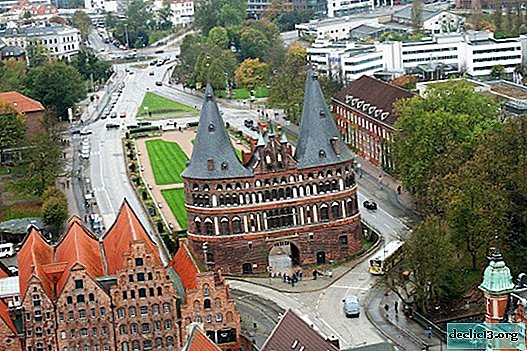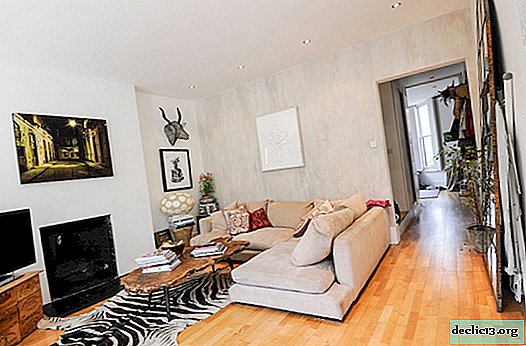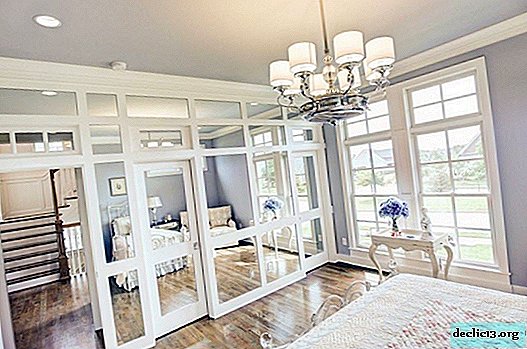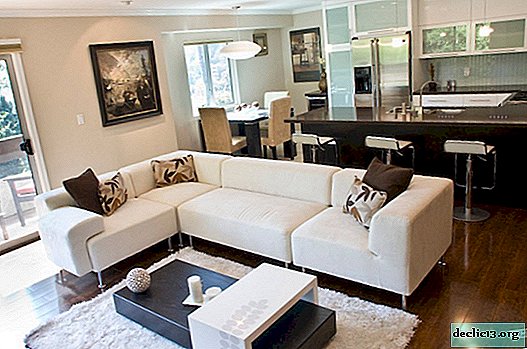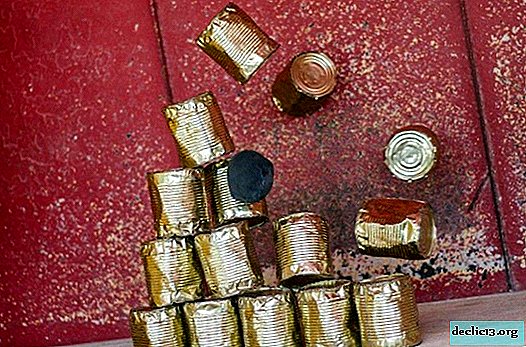Tiling stairs - the choice of practical and beautiful material
A house or street staircase is not just an engineering structure that provides access to different levels of a dwelling, but it is also an important element in the design of the interior or exterior of a building. The design of the stairs requires an individual approach. Especially when it comes to a concrete structure that needs additional decoration. Facing the stairs allows you to not only create a reliable and durable shell for the staircase frame, but also to transform the space in which it is located. Finishing the stairs can act as an accent of the interior or exterior of the building, and harmoniously integrate into the overall style and color palette of the space.
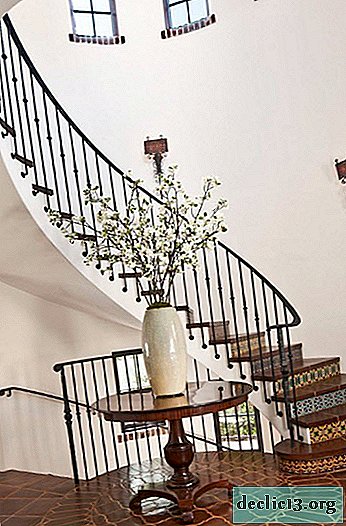
As a rule, reinforced concrete staircases need facing. In this case, all parts of the structure will be finished - horizontal planes (or treads), vertical surfaces (or risers) and baseboards (or sections of walls that are in close proximity to the steps). Treads must be lined with a non-slip, durable abrasion resistant material. Risers, at first glance, do not need finishing with durable material, but these are surfaces that we often touch with toes of shoes, so it is necessary to choose a finishing material that is resistant to impacts.

Cladding stairs with tiles will not only help to hide all the design flaws and errors, but also help create an external image that will become a dyeing of the interior or exterior of your home. But for reliable and durable staircase finishing, it is necessary to choose the right material and it is important to approach this process with all seriousness and care.

Criteria for choosing the material for facing the stairs
The following criteria will influence the choice of material for your staircase:
- the location of the stairs - it matters whether your design will be located on the street, where it will face not only temperature extremes, high humidity, the effects of alkaline environment and other climatic features of your region of residence. If the staircase is inside the building, it is important to consider how intensively it will be used. It’s one thing if the staircase is in the country house, where you spend two or three months a year, and another thing is the staircase in the private household, where a family of several people constantly resides. Outdoor tile for facing the stairs should be porous, not glossy, have high moisture resistance and resistance to temperature extremes;
- the choice of material depends not only on the location of the stairs, but also on the method of finishing floors on both floors;
- it is important to consider whether small children, elderly people and households with limited mobility will use the stairs;
- it is necessary to take into account whether the staircase should be "quiet", whether it is near bedrooms, children's rooms;
- an important aspect for deciding on the choice of material is the shape of the flight of stairs. Steps of direct marches can be tiled with tiles of any shape and size. To finish the running steps, a sufficiently large number of tiles will have to be cut, so it is important to choose the appropriate size and modification of the products. To reduce the amount of finishing waste (measure the entire area of the stairs, choosing the size of the tile, take into account allowances for tile joints);
- for more convenient operation of the stairs, it is necessary to take into account the execution of the edges on the steps. Edges should be smooth and strong, withstand the highest loads.

Types of tiles for finishing an intra-house or street staircase
Stone tiles
Natural stone for facing the stairs is chosen if it is necessary to emphasize the richness, luxury and elegance of the interior. Stone tile does not have high soundproofing properties, so it is not recommended to use it in small households. From the point of view of reliability and durability, there is no equal to natural stone in the field of construction and decoration, but stone surfaces will require appropriate care from you.

Steps are best faced with abrasion-resistant rocks - granite, sandstone, basalt and, of course, marble. Porous rocks of natural material are best excluded from the list of potential applicants - pores are very quickly clogged with dirt, and the staircase loses its attractive appearance, and constant grinding of surfaces is very tiring.

The stone staircase will not only have a high level of resistance to mechanical stress, abrasion and chip formation, but will also show itself as a moisture-resistant, heat-resistant interior element with excellent indicators of resistance to temperature extremes.

The staircase with marble trim looks majestic, elegant and luxurious. For structures lined with natural material, sophisticated forged railings with decorative elements and knobs are excellent.

The main disadvantage of facing the stairs using natural stone is the high cost of the material itself and its installation. Therefore, an artificial analogue of natural raw materials for finishing structures such as stairs is becoming increasingly popular among designers and homeowners.

Artificial stone (and acrylic stone can be considered the most popular now) has a number of important advantages:
- has a warm surface, which in comparison with natural stone is an obvious advantage for house staircases;
- durability and resistance to abrasion is at the same level as that of natural material;
- a wide range of color and texture palettes, a variety of patterns, imitations of natural raw materials;
- more affordable cost.

But it is important to note that from the point of view of the cost of finishing work, you will not be able to save money, lining with artificial stone often has the same cost as when working with natural material.

Snow-white marble for finishing steps and ceramic tiles with blue and white ornaments for facing vertical surfaces created an incredibly elegant, airy and bright image of a staircase that can decorate any homeownership.

Ceramic tile
This material is known to a lot of every homeowner who at least once made repairs in the bathroom, kitchen or bathroom. Ceramic tile is an inexpensive option for facing surfaces with a high level of resistance to humidity and temperature extremes. But not every type of ceramic can meet the high requirements for strength and abrasion resistance that are presented to the material for facing stairs, both in-house and outdoor.


The highest technological indicators and environmental resistance are demonstrated by granite, clinker or tile of the techno category. It makes sense to use ordinary ceramic tiles for facing vertical surfaces of stairs - risers. A huge selection of color palettes, options for prints and ornaments allows you to find the right one for each particular staircase that has the appropriate accompaniment in the decoration of the space adjacent to it.


Porcelain Tiles
Porcelain stoneware is a ceramic product, which has been technologically given enhanced properties of strength, resistance to chips, mechanical stress and abrasion. Otherwise, porcelain tile has the same advantages as ordinary ceramic tiles - moisture resistance, heat resistance, resistance to direct sunlight, alkaline environments and other chemical compounds.

When choosing a material for cladding inside houses and street stairs, there are two options - ready-made monolithic steps (suitable for standard steps from 120 to 160 cm long, 30 cm wide) and ceramic granite tiles.

Finished monolithic products have rounded ends and notches that protect against slipping. Such steps can be sold both separately and complete with a riser. The edge of the step is usually straight, curly or with a cornice. There are a lot of ready-made kits for facing all the surfaces of steps and the space near them. But such a set usually comes out expensive and does not always satisfy homeowners by color palette, because usually all elements are presented in one tone. An alternative may be the purchase of solid monolithic products for horizontal planes, and for the design of vertical surfaces, you can use colored ceramic or mosaic tiles.

The obvious advantage of using monolithic products for step lining is the absence of seams and the need for grouting, which will often need to be cleaned and subsequently updated.

For facing non-standard, curvilinear, fan-shaped stairs with downhill steps, ceramic granite tiles are used. From the point of view of installation, it is most convenient to use tiles with a side or cornice. In this case, you will not need to separately purchase a profile and install it.

The assortment of shops of finishing materials suggests the possibility of choosing the optimal size of porcelain tiles. For facing the stairs there is a tile with different options for designing the edge. Tile trim can be used to finish the skirting board.

For stairs, it is best to use structured (embossed) porcelain stoneware - such options often imitate the surface of natural stone, look attractive and rich, and from the point of view of safety and protection against slipping, they can be an ideal choice.
Brick tile
Clinker is essentially clay, but past fired at a very high temperature. It is the high temperature regime that distinguishes clinker products from ordinary tiles - at a temperature of about 1300 degrees, particles of minerals sinter, which form the basis of clay. The material obtained is superior in strength to some rocks of natural stone, but it is devoid of their main drawback - the possibility of moisture accumulation in cracks, pores and fractures. It is with the process of water accumulation in the upper layers of the stone that the main problem of street surfaces is associated - erosion of natural material.

Clinker tile water absorption does not exceed 3%, and as a result, the material has a very high frost resistance. The use of clinker tiles for cladding street stairs is more than a profitable investment for many years. Clinker masonry is able to last more than 200 years, subject to the rules of installation and operation.

Advantages of clinker cladding for stairs:
- high degree of wear resistance;
- resistance to moisture and temperature extremes at the highest level;
- the rough surface of the tile allows you to avoid slipping, which significantly affects the safety level of this finishing material;
- ease of care - a very dense surface does not allow dirt and dust to eat up and does not respond to aggressive detergents (when cleaning a street staircase lined with clinker, you can use any tools and abrasive substances - there will be no trace);
- attractive appearance - thanks to the addition of mineral dyes, the spectrum of the color palette is quite wide.

The disadvantages of clinker tiles as a finishing material include one, but very important for many of our compatriots minus - the high cost of products. But if the price for clinker does not bother you, then you should not look for a better option - this material will serve many generations of your family for many years.

The only thing that can help to save money when using clinker tiles for facing the stairs is the use of expensive material only for horizontal surfaces, risers can be made using ceramic tiles with various patterns and ornaments.


You can also use plastering, followed by painting the vertical planes of the stairs to save clinker for facing the stairwell.

An incredibly attractive, bright and non-trivial image is obtained by combining bright brown tones of clinker tiles as a finishing material for horizontal surfaces and the azure color of ceramic tiles for facing risers. This staircase design against the backdrop of snow-white walls gives the room a touch of Mediterranean style, recalls passionate Spain, sunny Turkey and romantic Italy.


